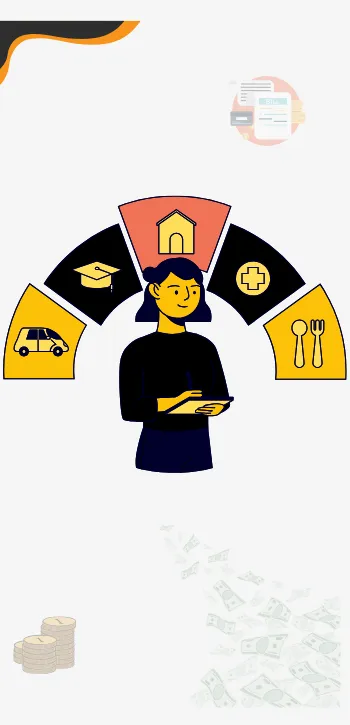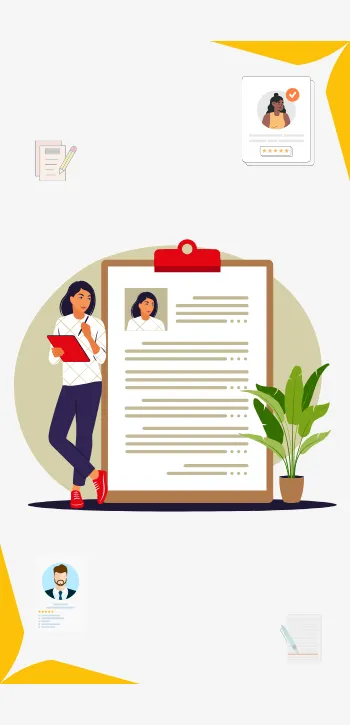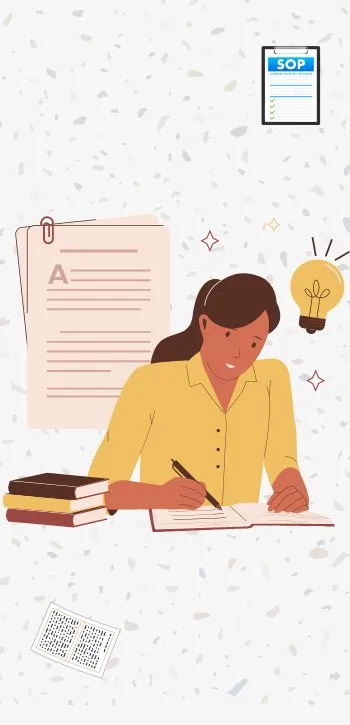The Duolingo English Test is a standardised measure for assessing the English Proficiency of the students. The DET helps to determine the speaking, listening, reading & writing skills. This becomes a significant test since the Duolingo English Test is accepted in 5,000 universities across the world. In this blog, we have discussed the exam pattern, types of questions & few major aspects of the DET. In this blog, we have provided a detailed guide to understand the Duolingo exam pattern, types of questions, its frequency that will help students to achieve success.
- Introduction of Duolingo English Test
- Popularity of the Test
- Duolingo Exam Pattern, Eligibility, Fees & More
- Duolingo Test Pattern
- Duolingo Exam Pattern & Major Sections of the Test
- Reading
- Writing
- Listening
- Video Interaction (Speaking)
- Detailed Analysis of Sections
- Duolingo English Test Validity
- Comparison of Duolingo English Test & TOEFL iBT
- Comparison of Duolingo English Test & IELTS
- FAQs
Introduction of Duolingo English Test
The Duolingo English Test is a standardised test of the English language that assesses the language proficiency of the students and gives them a standardised score based on their performance on the test. In recent years, the test has gained worldwide popularity & recognition because of its three mantras, i.e. affordability, accessibility, & universality.
The test is relatively shorter as compared to IELTS & TOEFL, with a duration of 60 mins. Apart from that, the most significant thing that sets the test apart is its affordability. The test costs $59 or 4,897 rupees which is relatively cheaper as compared to IELTS & TOEFL, making higher education universally accessible.
Popularity of the Test
Various factors contribute to the gaining popularity of the test. One of the significant factors is its wide acceptance. The Duolingo English Test is accepted by 5,000 universities across the globe. The accepting universities are: Duke University, University of Maryland, Yale University, etc.
Duolingo Exam Pattern, Eligibility, Fees & More
The Duolingo Test score ranges from 10-160, and each correct answer is awarded 5 points. The duration of the examination is 60 mins to be taken in online mode & the results of the test are declared within two days. The test is divided into three major sections. This includes an introduction, adaptive test & video interaction. Students above the age of 13 years can apply for the Duolingo English Test.
The uniqueness of the test is its adaptiveness. The test is adaptive compared to other tests like TOEFL and IELTS. It takes only an hour to complete the test & is relatively shorter than TOEFL & IELTS. Students can appear for it from anywhere and at any time. Moreover, the Duolingo Test price is relatively lower as compared to the high prices of TOEFL & IELTS. While IELTS costs INR 17,000 and TOEFL costs $205 (INR 17,000), DET, on the other hand, charges $59 or 4,897 rupees, making the education universally accessible to all.
The test is highly efficient in improving English speaking skills since the test measures the reading, writing, speaking & listening abilities of the students.
| Mode | Online |
|---|---|
| Duration | 60 mins |
| Section | 3 |
| Score range | 10-160 |
| Fees | $59 ( INR 4,897) |
Duolingo Test Pattern
The Duolingo English Test is divided into three major sections, which include an introduction, adaptive test & video interaction. The introduction section helps the students to check the functioning of their microphone, webcam, etc & is 5 minutes long. This section is followed by an adaptive test which is further divided into three sub-sections which include: reading, listening & writing. The last section is video interaction which is 10 minutes long and measures the speaking ability of students.
| Mode | Online |
|---|---|
| Duration | 60 mins |
| Section | 3 |
| Score range | 10-160 |
| Fees | $59 ( INR 4,897) |
Duolingo Exam Pattern & Major Sections of the Test
Reading
In this section, candidates are required to read short passages and answer the comprehension questions. This can be in the form of fill-in-the-blanks, multiple-choice questions, etc.
Types of questions
- Read and Select: Read all the words in English & select the most appropriate word which describes the correct English word.
- Read & Complete: Read the given sentence & type the missing letters to complete the sentence below.
- Read Aloud: Read aloud the given sentence & record your response.
- Read & Complete: Read the passage & choose the most suitable words to complete the sentence.
- Highlight the Answer: Read the passage & highlight your answer from the given passage.
- Title the passage: Read the passage & find a suitable title for the passage from the given options.
Writing
This section involves 2 open-ended questions which require written responses from the students. Other questions in this section can be in the form of fill in the blanks, responding with a written answer to the audio clip, etc.
Types of questions
- Fill in the blanks: Read the sentence with an unfinished word & then fill in the blanks to complete the word.
- Listen & Summarise: Listen to the audio clip & summarise the conversation.
- Write about the Photo: Write a description of the image shown for 1 minute
- Interactive Writing: Write about a given topic for 5 mins.
- Writing Sample: Under this section, write about a topic for 5 minutes
Listening
Candidates are required to respond to the audio clips or passages shown in this section & are required to answer them accordingly.
Types of questions
- Listen & Type: Listen to a person speaking & you will transcribe what you hear.
- Listen & Respond: Listen to an audio clip once & select the most suitable response to continue a conversation.
- Listen & Speak: Listen & then speak about the topic for 90 seconds.
Video Interaction (Speaking)
The section involves speaking responses based on the questions asked.
Types of questions
- Speaking Sample: Speaking Sample asks you to speak about a topic for 3 mins
- Read & then Speak: Speak about a given topic for 90 seconds based on the questions asked about the topic.
- Speak about the Photo: Speak about the Photo asks you to speak on a given image for 90 seconds.
- Listen & then Speak: Listen & then Speak asks you to listen to a given audio & speak about the topic for 90 seconds.
Video Interaction
The Video Interaction is the last part of the test which spans for 10 minutes. Students are required to respond to the open-ended questions in this round. Here are some points worth considering for the video interaction round:
- Ensure your webcam is working properly
- Your face should be in the frame while answering questions
- The voice should be audible, clear & loud.
- Frame a comprehensible answer
- Avoid fumbling or running short of words
Detailed Analysis of Sections
This section will help you understand the Duolingo exam pattern, types of questions & its frequency which will help you to prepare for the test accordingly. The 3 sub-sections of the adaptive test are reading, writing & listening. The table mentioned below will help you to get a comprehensive idea of it.
| Question Types | Subscores | Frequency |
|---|---|---|
| Read & Complete | Literacy & Comprehension | 15-18 |
| Fill in the blanks | Literacy & Comprehension | 6-9 |
| Read & Complete | Literacy & Comprehension | 3-6 |
| Read Aloud | Comprehension & Conversation | 3-6 |
| Listen & Type | Comprehension & Conversation | 6-9 |
| Interactive Reading | Literacy & Comprehension | 2 sets of 6 questions |
| Interactive Listening | Comprehension & Conversation | 2 sets of 5-6 question |
| Write about the photo | Production & Literacy | 3 |
| Interactive Writing | Literacy & Production | 1 set of 2 questions |
| Listen, then Speak | Conversation & Production | 2 |
| Speak about the photo | Conversation & Production | 1 |
| Read, then Speak | Conversation & Literacy | 1 |
| Writing Sample | Literacy & Production | 1 |
| Speaking Sample | Conversation & Production | 1 |
Duolingo English Test Validity
Students get the results of the test within 2 days & the test remains valid for 2 years after the declaration of the results.
Comparison of Duolingo English Test & TOEFL iBT
TOEFL iBT is the most accepted English Proficiency Test that also measures the reading, writing, speaking & listening abilities of the students. The score ranges from 0-120. Here is a detailed comparison of TOEFL with DET.
| Duolingo English Score | TOEFL iBT |
|---|---|
| 10-60 | 0-23 |
| 65 | 24-29 |
| 70 | 30-34 |
| 75 | 35-40 |
| 80 | 41-46 |
| 85 | 47-52 |
| 90 | 53-58 |
| 95 | 59-64 |
| 100 | 65-69 |
| 105 | 70-75 |
| 110 | 76-81 |
| 115 | 82-86 |
| 120 | 87-92 |
| 125 | 93-97 |
| 130 | 98-103 |
| 135 | 104-108 |
| 140 | 109-112 |
| 145 | 113-116 |
| 150 | 117-118 |
| 155 | 119 |
| 160 | 120 |
Comparison of Duolingo English Test & IELTS
IELTS is an English Proficiency test to analyse the English ability of the students. The score of the test exam ranges from 0 to 9. The test measures the English proficiency of the students who are planning to pursue their education abroad. This test is also divided into 4 major sections that include: reading, writing, speaking & listening. The data listed below is a comparison of DET & IELTS.
| Duolingo English Test | IELTS Academic |
|---|---|
| 10-60 | 0-4 |
| 65-70 | 4.5 |
| 80-90 | 5 |
| 95-100 | 5.5 |
| 105-115 | 6 |
| 120-125 | 6.5 |
| 130-135 | 7 |
| 140-145 | 7.5 |
| 150-155 | 8 |
| 160 | 8.5 |
FAQs
Is the Duolingo English Test difficult for students?
The difficulty level of the test depends on the student’s ability & strength. Some students might find the adaptive section tricky, while others might need help in the video interaction session. Hence, it depends on the student’s proficiency level rather than on the test.
Who accepts the Duolingo English Test?
5,000 universities across the globe accept Duolingo tests to measure English proficiency. Moreover, the link to the accepting universities is listed below: https://englishtest.duolingo.com/accepting_institutions
How many attempts can be given for the Duolingo English Test?
The attempts are not limited & students can give as many attempts as they wish to in the Duolingo English Test.
If you are an aspirant looking to study at your dream university, book an appointment with AdmitX today and start your applications early to avail yourself of all the benefits.













